 In this article,we shall discuss the major problems related to adolescence, including drug abuse, juvenile delinquency and school drop out.
In this article,we shall discuss the major problems related to adolescence, including drug abuse, juvenile delinquency and school drop out.
Throughout the childhood period, human life is given a shape which in most cases will remain for the rest of life. That is the reason why this particular period draws more attention of parents and teachers who are in charge of the well-being of the growing children. Adolescence on the other hand, is peculiarly the period characterised by crises of their own kind, especially due to changes in the adolescent’s body characteristics and social roles as well as the need for self-identity. We shall therefore discuss in few details the social problems related to adolescence.

These crises, if not well dealt with, may lead to problems of different types which can affect all psychological aspects of theadolescent. As most psychological problems are rooted in society, we shall focus our attention on the most outstanding forces in the life of a child, i.e. the peer group and the family.
We discussed these two groups in the preceding problematic issues, which stem from the child’s membership of peer groups and the family. Also shall we focus our attention on some prominentadolescentproblems such as drug abuse, juvenile delinquency, dropping out of school, unplanned pregnancies etc. Causes and ways of dealing with some of these behavioural problems will be suggested too.
1.DRUG ABUSE
A drug is any substance either chemical or natural, which is inhaled, drunk, rubbed or injected which has adverse effects on the functioning of the nervous system; For example, marijuana, cocaine, heroin, nicotine, glue, petrol and alcohol.
Drug addiction is the tendency for an individual to become dependent on drugs for the body to function normally and it is one of the major problems related to adolescence in these days. People seldom become physically addicted to drinking alcohol or marijuana but long-term dependence on alcohol or marijuana or any other “soft” drink can create psychological addiction. Psychologists believe that dependence on any reality altering substance denies the individual of the chance to live fully and productively.
(a) Causes of drug abuse
There are many causes of drug abuse. Some of them are:
• Peer pressure. This is the tendency to conform to the values of the peer group. Adolescents normally want to do what his/her peer group does. So, if a group has a habit of taking drugs, it is more likely that an individual who joins such a group will do the same.
• Frustration, anxiety, tensionTension is a stress that produces an elongation of an elasti... More, etc. Some adolescents and adults abuse drugs on the pretext of reducing tensions, anxieties or stress. Alcohol reduces anxiety and stress by inhibiting adrenalin or epinephrine, which is involved in anxiety Adolescents who use drugs as a solution to get rid of anxiety or stress are emotionally immature, passive and dependent persons who find life frustrating and anxiety provoking.
• Beliefs held about drugs have an important effect on adolescents. For instance, it is believed that marijuana, alcohol and other drugs when taken can increase the sexual powerPower in physics is the rate of doing work; measured in watt... More of an individual. Such beliefs greatly compel male adolescents to abuse drugs in an attempt to increase their sexual powerPower in physics is the rate of doing work; measured in watt... More.
• Parental influence. Some adolescents learn to use drugs or alcohol because they come from families in which parents use drugs or are addicted to alcohol.
• Social learning. People learn good or bad behaviour through observation of what others do or experience. Likewise, some adolescents imitate models in society who take drugs and vicariously learn to use them too.
• Availability of drugs. People learn to use drugs because they are available and accessible.
• Knowledge about drugs. The more knowledgeable people are about drugs; the more pro-drug use are their attitudes.
(b) Effects of drug abuse
• Depressants like alcohol relax the brain centres that control social behaviour. If people seem happier and more active when they are drinking, that is because the central nervous system activities have been lowered. However, long-term heavy drinking causes damage to the liver and stomach. If alcoholics do not die in an accident, they usually die of medical problems brought on by their drinking.
• Cocaine produces momentary distortions in thinking, such as diminished judgement and an inflated sense of one’s ability. Regular cocaine use results in paranoid thinking.
• Marijuana produces a state of being ‘high’ during which the individual may feel euphoric, giddy, unconscious or contemplative. It leads to moderate impairment of judgement; problem solving becomes less focussed and efficient. Also, marijuana has been said to lead to moral depravity, impotence, the development of breasts in males and inevitable progress to harder drugs.
• Abusers of drugs tend to develop disrespect for parents or significant others and the law which leads to more serious delinquency
• Loss to society of people whose psychological dependence on drugs or alcohol leads them to drop out of school and careers
• Auto accidents, senseless crimes, and unwanted pregnancies
• Nicotine found in tobacco is a more serious matter. In large doses, nicotine is a poison. In smaller amounts, it causes psychological dependence, that is, smokers become emotionally hooked on tobacco even though their bodies may not become physically addicted. People smoke because tobacco stimulates the central nervous system and helps distract their attention from problems. But it has life threatening lung problems.
(c) Ways of reducing drug use
Once a person becomes addicted, it becomes difficult for him or her to refrain from it. The task of the school, parents and teachers and all those concerned with the youth today, is:
· The youth and others should be sensitised about the dangers of using alcohol and drugs. Many young people receive no or little valid health information about drugs and alcohol.
· Parents and significant others should set good models. It is no use preaching the dangers of drugs and alcohol if adults themselves set a bad example.
· Combined efforts by both parents and the school should be made to prevent and counsel adolescents identified.
2.JUVENILE DELINQUENCY

A delinquent can be defined asa child or youth between ages6-18yearswho breaks laws enacted by authorities. Delinquents are characterised by behaviours such as violation of disciplinary measures of parents, truancy, stealing, robbery, and mob disobedience, violence, which they grow up from or of the upbringing they have received or a combination of the two.
(a) Causes of delinquency
Some youngsters commit crimes to relieve boredom and frustration. Adolescents’ needs for recognition, independence and affection may make them to turn to antisocial behaviour so as to reduce tensionTension is a stress that produces an elongation of an elasti... More.
• Some delinquents are drug addicts who need money to support their habits.
• Overly brutal and punitive or overly weak and inconsistent discipline at home might result in delinquency.
• Youngsters sometimes indulge in delinquent acts because antisocial behaviour is very much part of their background. For example, children who grow up in families or slums where people have little regard for law and order are most likely to get involved in delinquent acts than children who come from good families.
• Rejection by the father specifically may result in delinquent tendencies.
• Conflicts in the family. Research has revealed that delinquents are a characteristic of chaotic families.
(b) Signs of delinquency
The following are the signs of delinquency
• Premature school drop out
• Absconding from home and school
• Poor participation in extra-curricular school activities
• Strong antipathy to the school
• Poor personal and social adjustment
• Excessive experimentation with drugs or drug abuse
• Chronic truancy
• Low self-esteem and poor self-image
(c) Ways of preventing delinquency
There are many things that can be done to prevent delinquency:
• Both the school and the home should create an atmosphere that will strengthen the resistanceResistance is any mechanical force that tends to retard or o... More of children to the pressures of delinquency. A child should not be subjected to any unnecessary temptation. The school should be made an interesting and rewarding experience.
• A child should clearly understand that delinquent acts are punishable, but once punished, accept the child again as a member of the class, family or community.
• Ensure that there is affection, security and certainty in both the home and school; otherwise the young person might want to escape from an emotionally intolerable situation.
• Establish good child-parent and teacher-child relationships. Adolescents should be encouraged to talk about their problems and discuss freely the consequences of delinquency.
• Try to identify the early signs of maladjustment as well as the child’s mixing with problematic friends in life.
• Both the school and the home should emphasise a stable system of moral values and the value of self-discipline.
• Direct the energies of these young growing people into socially acceptable channels. Provide ample opportunities, that is, outdoor and indoor activities where aggression and frustration can be reduced.
• Potential delinquents should be given some special, responsible tasks. Show them that they are worth something.
3. SCHOOL DROPOUTS
For a number of reasons, a situation can arise where the child can no longer cope with school, subsequently, he/she drops out. The most obvious reason for dropping out of school is lack of school fees, but there are many other reasons. Some of them are described here:
(a) Causes of school dropouts
• Poor teacher-student and student-student relationships. Although not all students have good relationship with teachers, teachers should be aware that strained relationships adversely affect the performance of learners. Poor relationships bring about tensions and conflicts and may make learners develop a negative attitude towards the school.
•Early withdrawal from school often follows a family pattern. A child from a family where parents have a deprecating attitude toacademic achievementis most likely to withdraw from school early than a child from a family where parents value education.
•Continual failures.Students who hardly succeed in any school task may develop a negative attitude towards school. This in turn might lead to frustration and feelings of defeat and may eventually drop out of school.
•Peer group influence.Some students stop schooling because of the antisocial groups they join at school. Such groups have less interest in studies; instead, they get involved in delinquent acts.
Reasons why learners drop out of school cannot be exhausted. However, since children spend most of their time at school, the school should structure learning situations in such a way that there is a possibility of success for each individual child. The values and norms the school represents should be relevant to learners.
(b) Ways of preventing learners from dropping out of school
School drop out is one of the biggest problems related to adolescence, which affect,not only the family,but also the future of the countries. As a teacher, you have an important role to play in helping to prevent your students from dropping out of school: you can:
• Inculcate positive attitudes in students towards achievement and the school in general.
• Accept learning content to the needs and abilities of individual groups of learners.
• Establish a strong school guidance and career service. The children’s potentialities are known, the better they can be assisted in their choice of subjects, future directions etc.
• Positive attempts should be made to build the children’s morale; theirself-confidenceand the general image they have of themselves.
Early intervention programmes should form an integral part of a developing society’s education programme. The earlier children are given the correct developmental experiences, the less likely it is that they will develop learning and behaviour problems and eventually want to drop out of school.
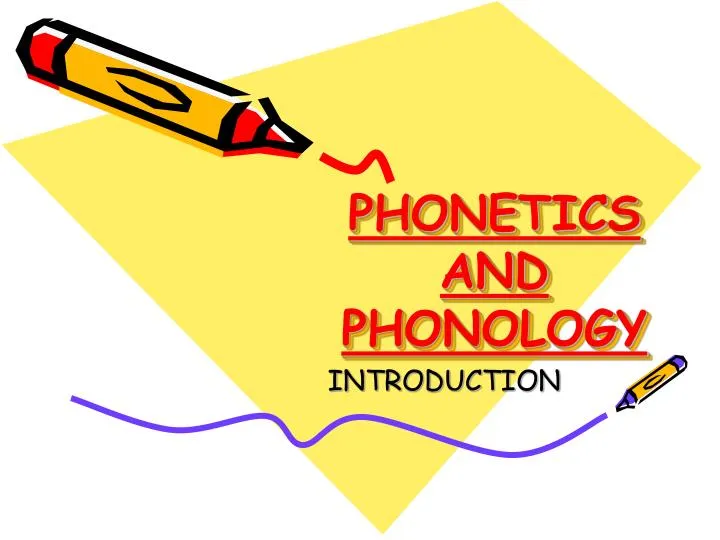 Phonetics and phonology are different but complementary domains in the study of languages. Phonetics on one hand deals with the sound production, as well as the organs or parts of body involved in their production. Phonology on the other hand, studies the various ways the sounds change due to the individual differences, such as culture, …
Phonetics and phonology are different but complementary domains in the study of languages. Phonetics on one hand deals with the sound production, as well as the organs or parts of body involved in their production. Phonology on the other hand, studies the various ways the sounds change due to the individual differences, such as culture, …
Phonetics and phonology are different but complementary domains in the study of languages. Phonetics on one hand deals with the sound production, as well as the organs or parts of body involved in their production. Phonology on the other hand, studies the various ways the sounds change due to the individual differences, such as culture, geographical location, etc.
Where are sounds produced?
This is a basic question in Phonetics and Phonology, which brings us to articulatory phonetics. Since language comes out through the mouth, it would be a good idea to study the mouth and the parts where each sound is made. Look at the diagram below.
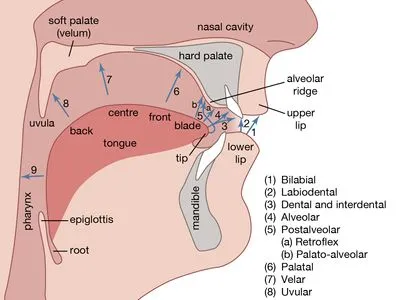
In the diagram you can see where each consonant sound is produced. We call these areas ‘points of articulation’. The points of articulation to make the sounds of English are the:
- two lips
- teeth ridge (alveolar)
- hard palate
- soft palate (velum)
- nasal cavity
- glottis.
The consonant sounds
Other area concerned by phonetics and phonology is the study of consonants. Each consonant sound has a name, derived from its place and manner of articulation. In the English consonant system there are 24 consonant sounds.
Below are listed all the 24 consonants of English. Because they are not letters but sounds, they are written in-between slanted strokes.
- /p/and/b/
- /t/ and /d/
- /k/ and /g/
- /f/ and /v/
- /s/ and /z/
- /ʃ/ and /ʒ/
- /ʧ/ and /ʤ/
- /ɵ/ and /ʆ/
- /m/
- /n/
- /ŋ/
- /I/
- /r/
- /h/
- /w/
- /j/
Observe carefully, in a mirror, where each of these sounds is produced and listen to the manner of production. Try to name each consonant sound – their points of articulation and the manner in which they are produced will help you do this. Most of them are in pairs – try sounding them out and note the differences.
Notice that /p/ and /b/ are produced by blocking the air from the lungs at the two lips and then releasing it suddenly. So where do you produce the two sounds? At the two (bi) lips (labials). How are the two sounds produced? By blocking the air with the lips and suddenly releasing it, making a plosive. So from the explanation of the manner and point of articulation, what name would you give to these two sounds? Bilabial plosives.
You can further classify the two bilabial plosives as ‘voiceless’ and ‘voiced’. Sound them again: /p/ is silent or voiceless and /b/ is voiced. Voiceless consonants are produced by tightening the vocal chords (voccoids) in the larynx so that they do not vibrate. With voiced consonants, the voccoids are relaxed and allowed to vibrate.
Plosive consonants can also be classified as ‘fortis’ and ‘lenis’; these are Latin words for strong and weak. Say the sounds /p/ and /b/ again – loudly. What do you feel? When /p/ is sounded, even-the chest moves due to forceIn physics, a force is any influence that causes a free body... More. So /p/ is fortis (strong) and -/b/ is lenis.
- /t/ and /d/ are alveolar plosives.
- /k/ and /g/ are velar plosives
- /f/ and /v/ are labio-dental fricatives.
- /s/ and /z/ are alveolar fricatives.
- /ʃ/ and /ʒ/ are post or palato-alveolar fricatives.
- /ʧ,/ and /ʤ/ are palato-aiveolar affricates.
- /ɵ/ and /ʆ/ are dental fricatives.
- /m/is a labio-nasal.
- /n/ is an alveolar nasal.
- /ŋ/ is a velar nasal.
- /l/ is a lateral.
- /r/ is a post alveolar approximant.
- /h/ is a glottal fricative.
- /j/ is an approximant or a semi-vowel.
- /w/ is an approximant or a semi-vowel.
The vowel sounds
A phoneme, in simple terms, is a meaningful sound unit. This means that all the sounds listed above are phonemes.
Look at the following symbols for vowel sounds.
Group A
- /ɪ/as in pit /pɪt/
- /e/ as in pet /pet/
- /ӕ/ as in man /mӕn/
- /ᴧ/ as in but /bᴧt/
- /ɒ/ as in pot /pɒt/
- /ʊ/ as in put /put/
- /ə/as in about /əbaʊt/
Group B
- /i:/ as in key /ki:/
- /ɑ:/as in car/kɑ:/
- /ɔ:/ as in core /lɔ:/
- /u:/as in cool /ku:/
- /ɜ:/ as in curve /kɜ:v/
Group C
- /eɪ/ as in bay /beɪ/
- /aɪ/ as in buy /baɪ/
- /ɔɪ/ as in boy /bɔɪ/
- /ɪd as in peer /pɪa/
- /ea/ as in pear /pea/
- /ʊa/ as in poor /pʊa/
- /eʊ/ as in go /geʊ/
- /aʊ/ as in cow /kaʊ/
Short and long vowel sounds
We have deliberately grouped the vowel sounds to help you understand more clearly. Groups A and B both have ‘pure vowel sounds’, but in Group A are ‘short vowel sounds’ and in Group B ‘long vowel sounds’. The vowel sounds in Group C are not pure; they are diphthongs. To make a diphthong the tongue has to ‘glide’; in other words, it has to shift from one position to another in order to bring out a sound. For example, to pronounce /ei/ the tongue moves from the Id to the /ɪ/ position. One vowel sound makes up a monophthong and two vowel sounds make up a diphthong. When three vowel sounds follow on they form a triphthong.
In any language the vowel and consonant sounds blend with each other to come up with intelligible words that carry the thoughts of the speaker. When these sounds reach the listener they have to be decoded, and this decoding will depend on what is already on the mind of the hearer.
Phonetics and phonology in brief
 Phonology covers the largest part of language, as communication in any language is facilitated by the sounds that carry the message.
Phonology covers the largest part of language, as communication in any language is facilitated by the sounds that carry the message.
 Different languages are the result of the differences in the way the sounds are produced and the meanings they convey, according to the culture and customs of the language-speakers.
Different languages are the result of the differences in the way the sounds are produced and the meanings they convey, according to the culture and customs of the language-speakers.
 Letters are not sounds and sounds are not letters, but letters stand for sounds. Phonetics is the study of the sounds of different languages.
Letters are not sounds and sounds are not letters, but letters stand for sounds. Phonetics is the study of the sounds of different languages.
 Phonemics (or phonetics) is the transcription or ‘writing gown’ of different languages.
Phonemics (or phonetics) is the transcription or ‘writing gown’ of different languages.
 Speaking in and listening to a language involves more than simply hearing. The brain has to encode and decode the language to make meaning.
Speaking in and listening to a language involves more than simply hearing. The brain has to encode and decode the language to make meaning.
Both phonetic and phonology are necessary to understand the basic elements of communication and expression in any language.
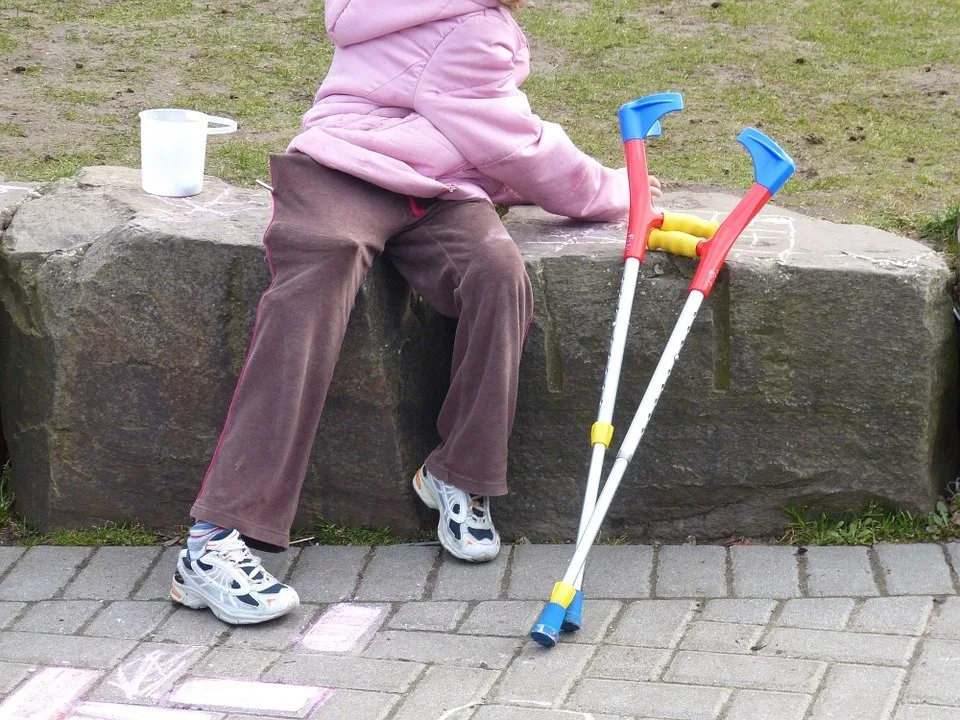 There are thousands known causes of disabilities, but in a great number of cases the exact cause of the disability is never known. Several factors may combine to create a disability. A disability may be developmental or acquired and may arise from prenatal damage, perinatal factors, acquired neonatal factors and early childhood factors. These may …
There are thousands known causes of disabilities, but in a great number of cases the exact cause of the disability is never known. Several factors may combine to create a disability. A disability may be developmental or acquired and may arise from prenatal damage, perinatal factors, acquired neonatal factors and early childhood factors. These may …
There are thousands known causes of disabilities, but in a great number of cases the exact cause of the disability is never known. Several factors may combine to create a disability.
A disability may be developmental or acquired and may arise from prenatal damage, perinatal factors, acquired neonatal factors and early childhood factors. These may include genetic factors, infections, traumatic or toxic exposure or nutritional factors which result in perinatal or postnatal damage.
Risk Factors for Developmental Delay
Developmental disabilities can occur singly or concurrently in one person. Developmental disabilities can involve a cognitive or sensory difficulty, social or communications/language-related problem, a motor impairment, adaptive delay or some combination of these. The Global Disease Control Priorities Project estimates that 10% to 20% of individuals worldwide have a developmental disability of some kind. In the U.S. alone, it is estimated that 9% of children younger than 36 months of age have a possible developmental problem, while 13.87% of children 3 to 17 years of age have a developmental disability.
Health care providers who see newcomer families have a pivotal role to play in identifying and initiating early treatment for developmental disabilities. Developmental disabilities may last a lifetime but early recognition of their existence, a timely diagnosis and an appropriate treatment plan can make a difference for the children and families involved. In many parts of the world, sub-optimal conditions and care during pregnancy and childbirth can have a range of impacts on developmental health.
PRENATAL CAUSES OF DISABILITIES
The lack of maternal and child health care is one of the significant causes of disabilities in developing countries. Lack of health insurance and inadequate access to health care for newcomers in Canada could similarly adversely affect health outcomes. Prenatal risk factors include chronic maternal illness, certain maternal infections, toxin exposures and nutritional deficiencies.
Infectious diseases
- HIV/AIDS
Some infections that the mother suffers can damage the infant when the disease organisms cross the placental barrier. For example, maternal HIV/AIDS increases the risks for prematurity and being small for gestational age (SGA). Both effects are associated with increased risk of mortality and developmental delay. HIV enters the central nervous system days to weeks after primary exposure. The virus causes neuronal damage and cell death, leading to progressive encephalopathy with motor disabilities, as well as to microcephaly and brain atrophy, with cognitive and language delays.
- Cytomegalovirus (CMV)
CMV is a herpes virus spread by close interpersonal contact with saliva, blood, genital secretions, and urine or breast milk. Maternal transmission to the fetus from a new or reactivated infection can occur at any gestational age but is highest with a primary infection compared to a reactivated infection. Ten per cent of affected infants show signs of infection at birth, with a substantial risk of neurological squeal such as Sensori-neural Hearing Loss (SNHL), intellectual delay, microcephaly, seizure disorders and cerebral palsy. CMV is the leading nonhereditary cause of SNHL, which may be progressive, absent at birth, unilateral or bilateral.
Genital herpes is one other virus that affects the newborn baby. Infection of the fetus with this virus usually occurs late in pregnancy, probably during delivery and can result in severe neurological damage. When infection occurs several weeks prior to birth, a variety of congenital abnormalities can result.
- Toxoplasmosis
Congenital toxoplasmosis occurs at a rate of 1.5 cases per 1000 live births and causes neurocognitive deficits such as intellectual disability, seizures and visual impairment caused by chorioretinitis.
- Rubella
One of the most serious viral diseases during the first three months of pregnancy is rubella, which may produce heart malformations and mental retardationRetardation or Deceleration, is a decrease in rate of change... More. Maternal infection during pregnancy transmits the rubella virus to the fetus, causing deafness, congenital cataracts, microcephaly, seizures and intellectual disability.
- Syphilis
It was estimated in 2008 that over 1.3 million cases of syphilis had occurred in pregnant women worldwide, with a large proportion being untreated or inadequately treated. Like all the preventable STIs, syphilis has been linked to preterm labour, low birth weight and death. Congenital syphilis can cause deafness, microcephaly, intellectual disability and visual impairment through interstitial keratitis.
Prenatal toxins
- Smoking
Maternal smoking during pregnancy increases the risk of placenta Previa, placental abruption, and preterm labour. It also has adverse effects on fetal growth.
- Alcohol
Excessive exposure to alcohol in the utero is the most common teratogenic cause of developmental disabilities, including microcephaly, cognitive disability, learning disabilities, Attention Deficits Hyperactivity Disorder (ADHD) and behavioral challenges. Fetal Alcohol Spectrum Disorder (FASD) occurs worldwide in approximately 1.9 per 1000 live births.11 Alcohol causes interruption of neuronal production and secondary destruction, with faulty migration of neurons causing microcephaly.
- Prescription and non-prescription drugs
Maternal exposure to other toxins, including recreational drugs and certain medications can also cause developmental disabilities. These drugs can cross the placenta and adversely affect the developing child. For example, around the 1960s, thalidomide was introduced as a medication to control nausea in pregnant women. But unfortunately, it turned out to cause severe malformations in the legs and/or arms of the developing child.
Many other drugs are suspected of producing birth defects when taken during pregnancy. Substances that produce such effects are called teratogens. There is a long list of substances known or suspected to be teratogens, including legal drugs such as alcohol, nicotine and caffeine. Prescription drugs such as hormones, steroids, anticonvulsants as well as tranquilizers are also known to causes disabilities at prenatal stage. Environmental pollutants such as lead and mercury as well as Illegal drugs such as cocaine, heroin and marijuana are known causes of disabilities at this stage.
- Phenylketonuria (PKU)
The amino acid phenylalanine is a neurotoxin to the developing fetal brain. Untreated PKU, both maternal and postnatal in the infant, causes intellectual disabilities.
- Environmental toxins
Excessive exposure to radiations such as X-rays can affect the fetus.
Exposure to lead, mercury and chemical compounds such as polychlorinated biphenyls (PCB) and alcohol can be identified as a contributing cause of intellectual disability in 4% to 5% of cases. The dose and timing of exposures are variables in predicting neurotoxic outcomes.
- Maternal chronic illness
Illnesses such as diabetes, hypertension, renal disease and autoimmune disorders are associated with complications to pregnancy that can adversely affect a fetus or newborn child. Maternal diabetes increases the risk of fetal anomalies, macrosomia (a birth weight >4000 grams), subsequent birth injury and hypoglycemia, all of which can negatively impact developmental outcomes in the infant. Hypertension, alone or combined with a renal or autoimmune disorder, can cause placental insufficiency and inadequate fetal growth.
- Maternal nutritional deficiencies
Maternal malnutrition, before and during pregnancy, can have a negative impacts on infant birth weight and development. Maternal nutrition affects the developing child. Deficiencies in iron, vitamins and calorieCalorie Is a unit of heat defined as the quantity of heat r... More intake can place the baby at risk. Severe maternal malnutrition may impair the child’s intellectual development in addition to having adverse effects on physical development. Folic acid deficiency is associated with neural tube defects. Severe deficiency is associated with intellectual disability, growth failure and cretinism. This risk factor for developmental disability may also be combined with increased exposure to prenatal toxins.
PERINATAL RISK FACTORS
The WHO and the Society of Obstetricians and Gynaecologists of Canada define the perinatal period as commencing at 22 weeks gestation and ending 7 days after birth. The inadequate care in this critical period puts mothers and children at higher risk for several pregnancy-related complications, such as birth trauma, hypoxia and ischemia, hypoglycemia, hyperbilirubinemia and various serious infections.
Disabilities originating at perinatal stage are biomedical in nature. They may result from drugs taken during labour and delivery, prematurity, injury, oxygen deprivation, or infections acquired during the trip through the birth canal.
- Perinatal infections
STIs: Congenital transmission of herpes viruses 1 and 2 is associated with a high risk of long-term neurological problems. Without treatment, 30% to 50% of infants born to mothers with untreated gonorrhea, and up to 30% with untreated chlamydia, will develop ophthalmic neonatorum, which can lead to blindness if not treated early.
Bacterial infections can be transmitted from mother to child trans-placentally, during pregnancy or during delivery, by passage through the birth canal. Congenital bacterial infections leading to neonatal sepsis and meningitis are an important cause of neonatal morbidity in developing countries.
- Rh Iso-immunization
Undiagnosed or untreated Rh Iso-immunization is associated with anemia and severe hyperbilirubinemia, and may result in seizures, deafness, cognitive delays and cerebral palsy in infants who survive.
- Premature/Preterm birth
Preterm birth (<37 weeks gestation) is a global problem. Risk factors for preterm delivery include: multi-fetal pregnancy, uterine abnormalities, placental bleeding, prenatal drug exposure, chronic maternal illness, hypertensive disorders, prolonged rupture of the membranes and bacterial vaginosis.
Lack of prenatal care, under immunization and inadequate treatment for maternal infections or other medical issues, including STIs, can all contribute to developmental disabilities in a preterm.
- Oxygen deprivation
This condition is also known an anoxia. It may occur during a prolonged or difficult birth, and because the brain suffers damage very quickly without a fresh and adequate supply of oxygen, brain damage can result. The neurons of the central nervous system require oxygen, if they are deprived of it, some cells may die and this can cause physical and psychological defects. If too many neurons die, the infant may suffer serious brain damage. Anoxia in a newborn is more likely to damage cell of the brain stem than those of the cortex and to result in motor defects. In extreme cases, the child may experience paralysis of the legs and arms.
POSTNATAL/ENVIRONMENTAL CAUSES OF DISABILITIES
Postnatal causes occur after birth. The environment is a major factor in many of these situations. Congenital illnesses or infections such as meningitis, cerebral malaria and other childhood illnesses may cause mental retardationRetardation or Deceleration, is a decrease in rate of change... More. Meningitis if not treated may cause brain damage. Other environmental factors include:
- Poor nutrition
- Inadequate medical care
- Exposure to environmental toxins such as lead.
- Ignored or neglected infants, not provided with mental or physical stimulation may suffer from intellectual disabilities.
- Physical abuse- children who are excessively abused may show some discrepancy in terms of their mental development.
PRECONCEPTIONAL FACTORS / GENETIC FACTORS
Preconceptional causes of developmental disability relate predominantly to genetic disorders or malformation syndromes. Genetic disorders are the most commonly identified causal factor for intellectual and other disabilities, and include single gene disorders, multifactorial and polygenic disorders, and chromosomal abnormalities. Genetic disorders associated with developmental delay include sickle cell disease. Sickle cell is a blood disorder caused by recessive genes. Children only have the disorder if they receive the gene from both parents. If the gene is paired with a normal one, the individual does not have the condition, but can pass it on to his or her descendants. These individuals are called carriers. Other examples of genetic causes of disabilities include:
- Fragile X syndrome
The fragile X syndrome is an inherited disability caused by a mutation on the X chromosome and it is now recognized as the most commonly known inherited cause of mental retardationRetardation or Deceleration, is a decrease in rate of change... More, affecting about 1 in 4,000 males and 1 in 8,000 females. A common associated condition is recurrent otitis media (middle ear infection) with resulting hearing and language problems.
Cognitive disabilities can also be severe. Many of these individuals are challenged by limited attention span, hyperactivity, stereotypic behaviours (such as hand flapping or hand biting), and an inability to relate to others in typical ways. It is believed that almost half of individuals with fragile X syndrome have coexisting autism.
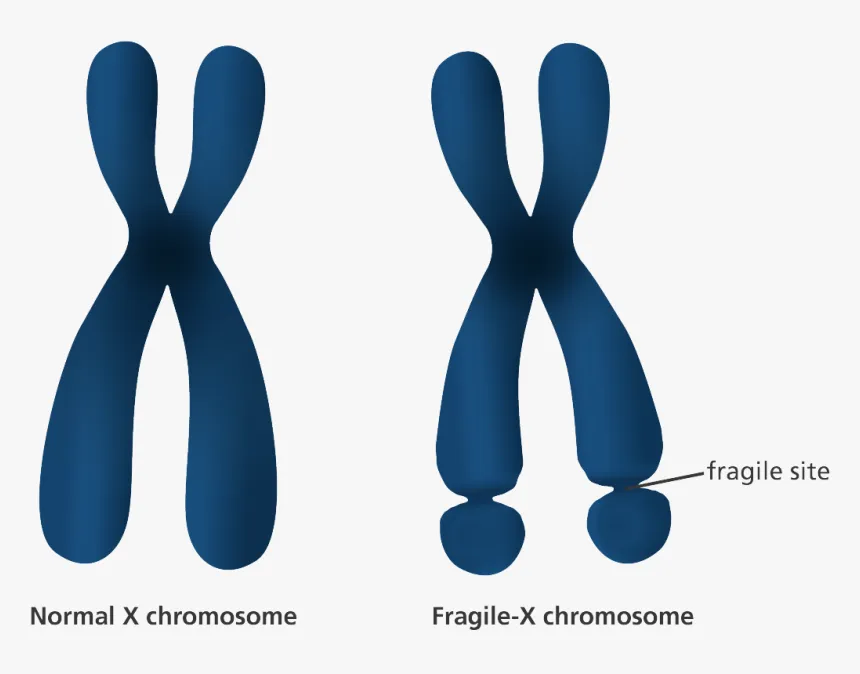
- Down syndrome
Another example of a genetic cause for mental retardationRetardation or Deceleration, is a decrease in rate of change... More due to a chromosomal abnormality is Down syndrome (a chromosomal disorder wherein the individual has too few or too many chromosomes). The nucleus of each human cell normally contains 23 pairs of chromosomes (a total of 46). In the most common type of Down syndrome, trisomy 21, the 21st set of chromosomes contains three chromosomes rather than the normal pair. Certain identifiable physical characteristics include an extra flap of skin over the innermost corner of the eye.
The degree of mental retardationRetardation or Deceleration, is a decrease in rate of change... More varies, depending in part on how soon the disability is identified, the adequacy of the supporting medical care, and the timing of the early intervention. A great majority of people with Down syndrome have a high incidence of medical problems. For example, about half have congenital heart problems, and these individuals have a 15 to 20 times greater risk of developing leukaemiaLeukaemia or Cancer of blood is a Malignant neoplasm of bloo... More. Although people with Down syndrome have intellectual disabilities, they have fewer adaptive behaviour challenges than many of their peers with mental retardationRetardation or Deceleration, is a decrease in rate of change... More.
- Phenylketonuria (PKU)
Some genetic causes of disabilities are not so definite but rather result from interplay between genes and the environment. Phenylketonuria (PKU), also hereditary, occurs when a person is unable to metabolize phenylalanine, which builds up in the body to toxic levels that damage the brain. If untreated, PKU eventually causes mental retardationRetardation or Deceleration, is a decrease in rate of change... More. Changes in diet (eliminating certain foods that contain this amino acid, such as milk) can control PKU and prevent mental retardationRetardation or Deceleration, is a decrease in rate of change... More, though cognitive disabilities can be seen in both treated and untreated individuals with this condition

Overcoming challenges
Although some conditions or causes of disabilities cannot be prevented, at least at the present time, the impact of the condition can be reduced substantially by directly addressing the cause. For example, PKU is a genetic reason for mental retardationRetardation or Deceleration, is a decrease in rate of change... More but that it takes factors in the individual’s environment for damage to be devastating. Even more cases are preventable.
Education and access are at the heart of many prevention measures. For example, education about the prevention of HIV/AIDS can be effective with all adolescents, including those with mental retardationRetardation or Deceleration, is a decrease in rate of change... More. Public education programs can also help pregnant women understand the importance of staying healthy.
Other prevention strategies involve testing the expectant mother, analysing the risk factors of the family (genetic history of disabilities or various conditions), and taking action when necessary; screening infants; protecting children from disease through vaccinations; creating positive, nurturing, and rich home and school environments; and implementing safety measures. The incidence of disabilities, including mental retardationRetardation or Deceleration, is a decrease in rate of change... More, has been greatly reduced by immunization against viruses such as rubella, meningitis, and measles.
People must not underestimate the importance of prenatal care. For example, FAS is 100 per cent preventable. Pregnant mothers who do not drink alcohol prevent this condition in their children. Staying healthy also means taking proper vitamins and eating a well-balanced diet. For example, folic acid reduces the incidence of neural tube defects. By eating citrus fruits and dark, leafy vegetables (or taking vitamin supplements), one receives the benefits of folic acid—a trace B vitamin that contributes to the prevention of conditions such as spina bifida and anencephaly.
Prevention of disabilities
| For Pregnant Women | For Children | For Society |
| Obtain early prenatal medical care. | Guarantee universal infant screening. | Eliminate the risks of child poverty. |
| Seek genetic counselling. | Ensure proper nutrition. | Make early intervention programs universally available. |
| Maintain good health. | Place household chemicals out of reach. | Provide parent education and support. |
| Avoid alcohol, drugs, and tobacco. | Use automobile seatbelts, safety seats, and cycle helmets. | Protect children from abuse and neglect. |
| Obtain good nutrition. | Provide immunizations. | Remove environmental toxins. |
| Prevent premature births. | Prevent or treat infections. | Provide family planning services. |
| Take precautions against injuries and accidents. | Have quick and easy access to health care. | Provide public education about prevention techniques. |
| Prevent or immediately treat infections. | Prevent lead poisoning. | Have universal access to health care. |
| Avoid sexually transmitted diseases. | Guarantee proper medical care for all children. | Vaccinate all children. |
| Provide early intervention programs. | ||
| Eliminate child abuse and neglect. |
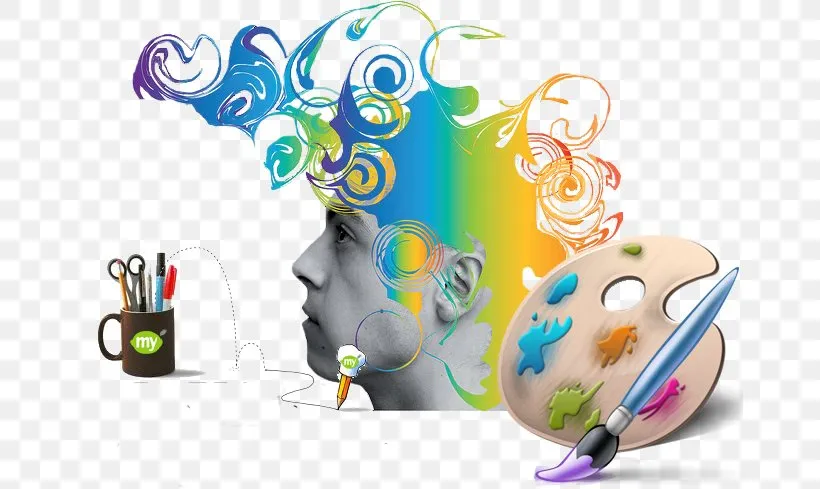 Visual communications constitute a form of communication through visual aid. It is the conveyance of ideas and information in forms that can be read or looked upon.
Visual communications constitute a form of communication through visual aid. It is the conveyance of ideas and information in forms that can be read or looked upon.
Visual communications as the name suggests constitute a form of communication through visual aid. It is the conveyance of ideas and information in forms that can be read or looked upon. It is one of the non-verbal communication skills that involves the sight and perception to communicate the information to the audience.
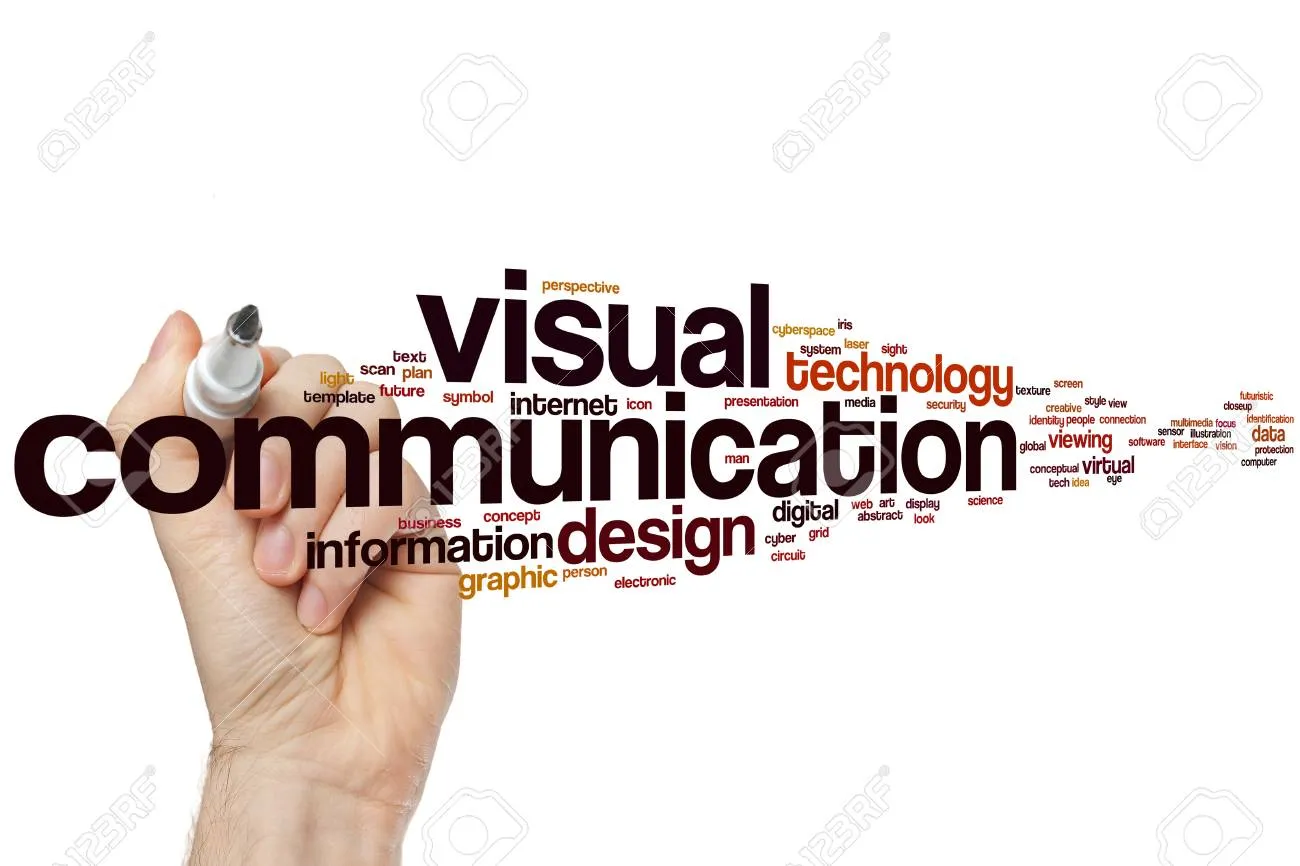
Primarily associated with two dimensional images, the visual communications includes: signs, fl, drawing, graphic design, mapping, colour and electronic resources. It solely relies on vision. It is a form of communication with visual effect. It explores the idea that a visual message with text has a greater powerPower in physics is the rate of doing work; measured in watt... More to inform, educate or persuade a person. It is communication by presenting information through visual form.
Qualities of good visual Communications
The evaluation of a good visual design is based on measuring comprehension by the audience, not on aesthetic or artistic preference. There are no universally agreed-upon principles of beauty and ugliness. There exists a variety of ways to present information visually, like gestures, body languages, video and TV. Here, focus is on the presentation of text, pictures, diagrams, photos, et cetera, integrated on a computer di
splay. The term visual presentation is used to refer to the actual presentation of information. Recent research in the field has focused on web design and graphically oriented usability. Graphic designers use methods of visual communications in their professional practice.
Types of Visual communications
1. Maps
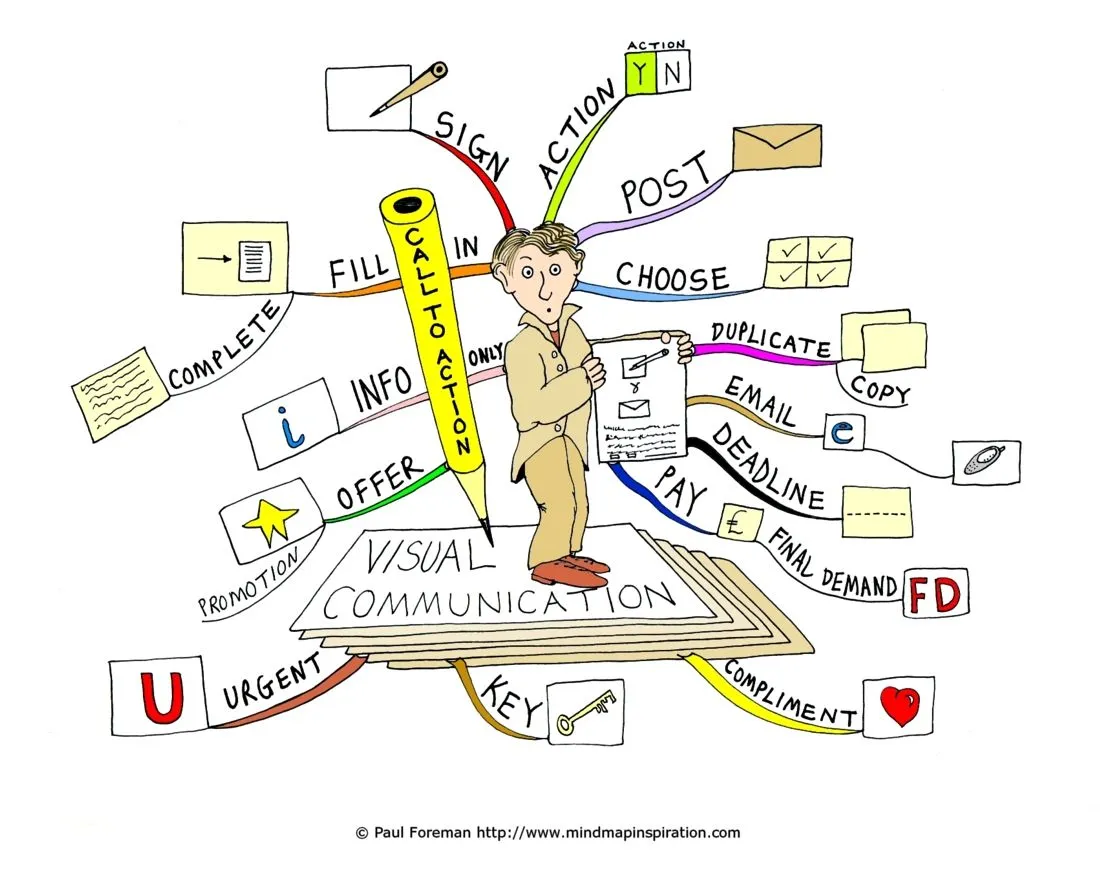
Maps are not just a tool in visual communications, They constitute a powerful tool to link one’s mind to the reality. A map brings the scattered elements of the visual objects together for them to make a full sense to the viewer. Not only that, the potentials of mapping presentation go as far as narrowing a wider reality, such as a geographical area presentation, and give the viewer the capability to locate a point in space. They also constitute a skill in art design meant to give directions and links in both space and time to the viewers.
2. Presentations
A good and clear presentation involves the various communication skills, such as writing, drawing, mapping. Presentation itself is a type of visual communications, which is meant to illustrate or share the real life situation or phenomena, in response to the audience need. To successfully present a visual piece of information, the presenter need be mindful of a number of considerations. These include the language used, the graphical quality, the generation, the age and gender, to mention just a few.
3. Flow Charts
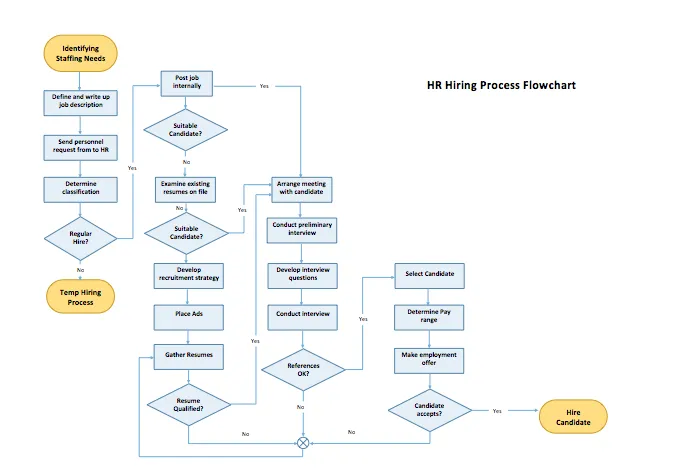
Flow charts as a form of visual communication are aimed at mapping up or graphically representing the process or organisational structures. Flow charts are very important in Business communication, like in other areas that require information flow, in the sense that they give a quick impression of what is being referred to in the presentation.
4. Graphic communication
As the name sounds, graphical communication is a visual presentation, which relies on graphs or other connections among the visual elements of a situation to relate the ideas. This form of communication employs visual structures such as sketches, illustrations and diagrams to express the information. This is a very common form of visual communication, mainly because it doesn’t require more sophistication, but still requires high accuracyAccuracy is The number of significant figures given in a num... More to be more understandable.
5. Signs and Symbols
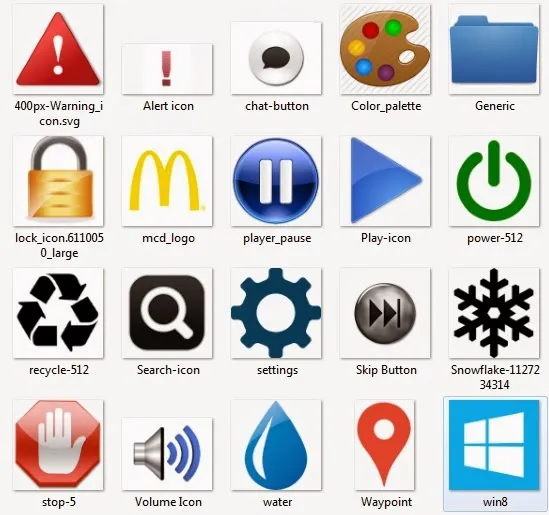
This is a form of non-verbal communication, which is visual in nature. It is usually referred to as sign language, and consist of different body gestures made by individuals to communicate the necessary information. However, it also incorporates a large set of conventional signs and symbols used in different places or instances to convey messages.
The signs used in this form of communication should be conventional, either internationally or culturally. However, like in any other language communication, there is need to be mindful of cultural differences. Some kind gestures might be offensive in another culture or communicate a totally different kind of message.
CONCLUSION
Communication can now be seen as a very complex process which goes beyond speech making. In the real sense, communication involves a lot of others things that symbols that can be interpreted in various forms depend on the situation and a times the location of the event.
Visual Communication for instances, is one form of non-verbal communication, which gives the meaning of a particular gesture, though this might be different in another geographical location. More so, silence is definitely a means of communication. Hence the various forms of communication are inexhaustible.
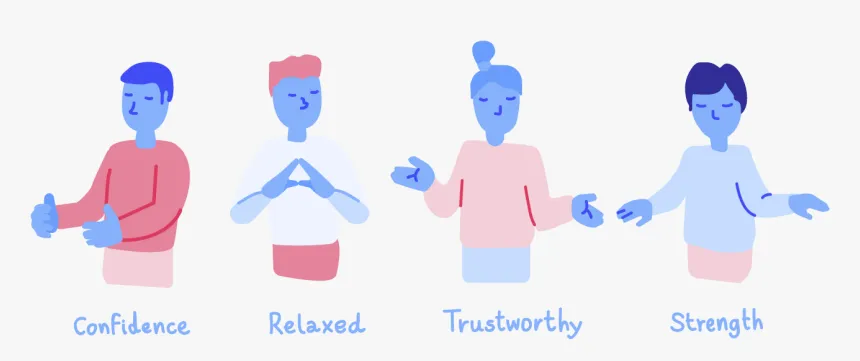 Non-verbal communication is the process of communicating through sending and receiving wordless messages. Such messages can be communicated through gesture, body language or posture; facial expression and eye contact, object communication such as clothing, hairstyles or even architecture, or symbols and infographics, as well as through an aggregate of the above, such as behavioural communication. …
Non-verbal communication is the process of communicating through sending and receiving wordless messages. Such messages can be communicated through gesture, body language or posture; facial expression and eye contact, object communication such as clothing, hairstyles or even architecture, or symbols and infographics, as well as through an aggregate of the above, such as behavioural communication. …6 MUST-KNOW THINGS ABOUT NON-VERBAL COMMUNICATION Read More »

Non-verbal communication is the process of communicating through sending and receiving wordless messages. Such messages can be communicated through gesture, body language or posture; facial expression and eye contact, object communication such as clothing, hairstyles or even architecture, or symbols and infographics, as well as through an aggregate of the above, such as behavioural communication. Nonverbal communication plays a key role in every person’s day to day life, from employment to romantic engagements.

Speech may also contain non-verbal elements known as paralanguage, including voice quality, emotion and speaking style, as well as prosodic features such as rhythm, intonation and stress. Likewise, written texts have non-verbal elements such as handwriting style, spatial arrangement of words, or the use of emotions. A portmanteau of the English words emotion (or emote) and icon, an emoticon is a symbol or combination of symbols used to convey emotional content in written or message form.
However, much of the study of non-verbal communication has focused on face-to-face interaction, where it can be classified into three principal areas: environmental conditions where communication takes place, the physical characteristics of the communicators, and Verbal vs oral communication
Scholars in this field usually use a strict sense of the term “verbal— meaning “of or concerned with words,” and do not use “verbal communication” as a synonym for oral or spoken communication. Thus, vocal sounds that are not considered to be words, such as a grunt, or singing a wordless note, are non-verbal. Sign languages and writing are generally understood as forms of verbal communication, as both make use of words — although like speech, both may contain paralinguistic elements and often occur alongside non-verbal messages. Non-verbal communication can occur through any sensory channel
PHYSICAL ENVIRONMENT
Environmental factors such as furniture, architectural style, interior decorating, lighting conditions, colours, temperature, noise, and music affect the behaviour of communicators during interaction. The furniture itself can be seen as a non-verbal message
Proxemics
Proxemics is the study of how people use and perceive the physical space around them. The space between the sender and the receiver of a message influences the way the message is interpreted.
The perception and use of space varies significantly across cultures and different settings within cultures. Space in non-verbal communication may be divided into four main categories: intimate, social, personal, and public space. (Scott Mclean, 1969) The distance between communicators will also depend on sex, status, and social role.
Chronemics
Chronemics is the study of the use of time in non-verbal communication. The way we perceive time, structure our time and react to time is a powerful communication tool, and helps set the stage for communication. Time perceptions include punctuality and willingness to wait, the speed of speech and how long people are willing to listen. The timing and frequencyFrequency is the number of occurrences( repetition or oscill... More of an action as well as the tempo and rhythm of communications within an interaction contributes to the interpretation of non-verbal messages. Gudykunst & Ting-Toomey (1988) identified 2 dominant time patterns:
Monochronic time schedule (M-time): Time is seen as being very important and it is characterized by a linear pattern where the emphasis is on the use of time schedules and appointments. Time is viewed as something that can be controlled or wasted by individuals, and people tend to do one thing at a time. The M-pattern is typically found in North America and Northern Europe.
Polychronic time schedule (P-time): Personal involvement is more important than schedules where the emphasis lies on personal relationships rather than keeping appointments on time. This is the usual pattern that is typically found in Latin America and the Middle East.
MOVEMENT AND BODY POSITION
Kinetics
Information about the relationship and affect of these two skaters is communicated by their body posture, eye gaze and physical contact.
Kinetics is the study of body movements, facial expressions, and gestures. It was developed by anthropologist Ray L. Birdwhistell in the 1950s. Kinesic behaviors include mutual gaze, smiling, facial warmth or pleasantness, childlike behaviors, direct body orientation, and the like. Birdwhistell proposed the term kineme to describe a minimal unit of visual expression, in analogy to a phoneme which is a minimal unit of sound.
Posture in non-verbal communication
Posture can be used to determine a participant’s degree of attention or involvement, the difference in status between communicators, and the level of fondness a person has for the other communicator. Studies investigating the impact of posture on interpersonal relationships suggest that mirror-image congruent postures, where one person’s left side is parallel to the other’s right side, leads to favorable perception of communicators and positive speech; a person who displays a forward lean or a decrease in a backwards lean also signify positive sentiment during communication. Posture is understood through such indicators as direction of lean, body orientation, arm position, and body openness.
Gesture
A wink is a type of gesture. A gesture is a non-vocal bodily movement intended to express meaning. They may be articulated with the hands, arms or body, and also include movements of the head, face and eyes, such as winking, nodding, or rolling ones’ eyes. The boundary between language and gesture, or verbal and non-verbal communication, can be hard to identify. According to Ottenheimer (2007), psychologists Paul Ekman and Wallace Friesen suggested that gestures could be categorised into five types: emblems, illustrators, affect displays, regulators, and adaptors.
Emblems are gestures with direct verbal translations, such as a goodbye wave; illustrators are gestures that depict what is said verbally, such as turning an imaginary steering wheel while talking about driving; an affectdisplay is a gesture that conveys emotions, like a smile; regulators are gestures that control interaction;
and finally, an adaptor is a gesture that facilitates the release of bodily tensionTension is a stress that produces an elongation of an elasti... More, such as quickly moving one’s leg.
Gestures can also be categorised as either speech-independent or speech-related. Speech- independent gestures are dependent upon culturally accepted interpretation and have a direct verbal translation. A wave hello or a peace sign are examples of speech- independent gestures. Speech related gestures are used in parallel with verbal speech; this form of non-verbal communication is used to emphasize the message that is being communicated. Speech related gestures are intended to provide supplemental information to a verbal message such as pointing to an object of discussion.
Haptics
A high five is an example of communicative touch.
Haptics is the study of touching as non-verbal communication. Touches that can be defined as communication include handshakes, holding hands, kissing (cheek, lips, hand), back slapping, high fives, a pat on the shoulder, and brushing an arm. Touching of oneself may include licking, picking, holding, and scratching. These behaviors are referred to as “adaptor” and may send messages that reveal the intentions or feelings of a communicator. The meaning conveyed from touch is highly dependent upon the context of the situation, the relationship between communicators, and the manner of touch.
Eye gaze
The study of the role of eyes in non-verbal communication is sometimes referred to as “oculesics”. Eye contact can indicate interest, attention, and involvement. Gaze comprises the actions of looking while talking, looking while listening, amount of gaze, and frequencyFrequency is the number of occurrences( repetition or oscill... More of glances, patterns of fixation, pupil dilation, and blink rate.
PARALANGUAGE
Paralanguage (sometimes called vocalics) is the study of non-verbal cues of the voice. Various acoustic properties of speech such as tone, pitch and accent, collectively known as prosody, can all give off non-verbal cues. Paralanguage may change the meaning of words.
The linguist George L. Trager developed a classification system which consists of the voice set, voice qualities, and vocalisation.
The voice set is the context in which the speaker is speaking. This can include the situation, gender, mood, age and a person’s culture.
The voice qualities are volume, pitch, tempo, rhythm, articulation, resonance, nasality, and accent. They give each individual a unique “voice print”. Vocalization consists of three subsections: characterises, qualifiers and segregates. Characterisers are emotions expressed while speaking, such as laughing, crying, and yawning. A voice qualifier is the style of delivering a message – for example, yelling “Hey stop that!”, as opposed to whispering “Hey stop that”. Vocal segregates such as “uh-huh” notify the speaker that the listener is listening.
FUNCTIONS OF NON-VERBAL COMMUNICATION
Argyle (1970) put forward the hypothesis that whereas spoken language is normally used for communicating information about events external to the speakers, non-verbal codes are used to establish and maintain interpersonal relationships. It is considered more polite or nicer to communicate attitudes towards others non-verbally rather than verbally, for instance in order to avoid embarrassing situations
Argyle (1988) concluded there are five primary functions of non-verbal bodily behavior in human communication:
- Express emotions
- Express inter-personal attitudes
- To accompany speech in managing the cues of interaction between speakers and listeners
- Self-presentation of one’s personality Rituals (greetings)
INTERACTION OF VERBAL AND NON-VERBAL COMMUNICATION
When communicating, nonverbal messages can interact with verbal messages in six ways: repeating, conflicting, complementing, substituting, regulating and accenting/moderating.
Repeating
“Repeating” consists of using gestures to strengthen a verbal message, such as pointing to the object of discussion.
Conflicting
Verbal and non-verbal messages within the same interaction can sometimes send opposing or conflicting messages. A person verbally expressing a statement of truth while simultaneously fidgeting or avoiding eye contact may convey a mixed message to the receiver in the interaction. Conflicting messages may occur for a variety of reasons often stemming from feelings of uncertainty, ambivalence, or frustration. When mixed messages occur, non-verbal communication becomes the primary tool people use to attain additional information to clarify the situation; great attention is placed on bodily movements and positioning when people perceive mixed messages during interactions.
Complementing
Accurate interpretation of messages is made easier when non-verbal and verbal communication complements each other. Non-verbal cues can be used to elaborate on verbal messages to reinforce the information sent when trying to achieve communicative goals; messages have been shown to be remembered better when nonverbal signals affirm the verbal exchange.
Substituting
Non-verbal behaviour is sometimes used as the sole channel for communication of a message. People learn to identify facial expressions, body movements, and body positioning as corresponding with specific feelings and intentions. Non-verbal signals can be used without verbal communication to convey messages; when non-verbal behaviour does not effectively communicate a message, verbal methods are used to enhance understanding.
Regulating
Non-verbal behaviour also regulates our conversations. For example, touching someone’s arm can signal that you want to talk next or interrupt.
Accenting/Moderating
Non-verbal signals are used to alter the interpretation of verbal messages. Touch, voice pitch, and gestures are some of the tools people use to accent or amplify the message that is sent; nonverbal behaviour can also be used to moderate or tone down aspects of verbal messages as well. For example, a person who is verbally expressing anger may accent the verbal message by shaking a fist.
Dance and non-verbal communication

Dance is a form of non-verbal communication that requires the same underlying faculty in the brain for conceptualization, creativity and memory as does verbal language in speaking and writing. Means of self-expression, both forms have vocabulary (steps and gestures in dance), grammar (rules for putting the vocabulary together) and meaning. Dance, however, assembles (choreographs) these elements in a manner that more often resembles poetry, with its ambiguity and multiple, symbolic and elusive meanings.
 Problems with communication can pop-up at every stage of the communication modelling process (which consists of the sender, encoding, the channel, decoding, the receiver, feedback and the context – see the diagram below). At each stage, there is the potential for misunderstanding and confusion. To be an effective communicator and to get your point across …
Problems with communication can pop-up at every stage of the communication modelling process (which consists of the sender, encoding, the channel, decoding, the receiver, feedback and the context – see the diagram below). At each stage, there is the potential for misunderstanding and confusion. To be an effective communicator and to get your point across …
Problems with communication can pop-up at every stage of the communication modelling process (which consists of the sender, encoding, the channel, decoding, the receiver, feedback and the context – see the diagram below). At each stage, there is the potential for misunderstanding and confusion.

To be an effective communicator and to get your point across without misunderstanding and confusion, your goal should be to lessen the frequencyFrequency is the number of occurrences( repetition or oscill... More of problems at each stage of this process, with clear, concise, accurate, well-planned communications. We follow the process through below:
Source
As the source of the message, you need to be clear about why you’re communicating, and what you want to communicate. You also need to be confident that the information you’re communicating is useful and accurate.
Message
The message is the information that you want to communicate in the communication modelling. It runs from sender to receiver if there is no obstacle on the way.
Encoding in Communication Modelling
This is the process of transferring the information you want to communicate into a form that can be sent and correctly decoded at the other end. Your success in encoding depends partly not only on your ability to convey information clearly and simply, but also on your ability to anticipate and eliminate sources of confusion (for example, cultural issues, mistaken assumptions, and missing information.)

A key part of this is knowing your audience: Failure to understand who you are communicating with will result in delivering messages that are misunderstood.
Channel
Messages in communication Modelling are conveyed through channels, with verbal channels including face-to-face meetings, telephone and videoconferencing; and written channels including letters, emails, memos and reports.
Different channels have different strengths and weaknesses. For example, it’s not particularly effective to give a long list of directions verbally, while you’ll quickly cause problems if you give someone negative feedback using email.
Decoding
Just as successful encoding is a skill, so is successful decoding (involving, for example, taking the time to read a message carefully, or listen actively to it.) Just as confusion can arise from errors in encoding, it can also arise from decoding errors. This is particularly the case if the decoder doesn’t have enough knowledge to understand the message.
Receiver
Your message is delivered to individual members of your audience. No doubt, you have in mind the actions or reactions you hope your message will get from this audience. Keep in mind, though, that each of these individuals enters into the communication modelling process with ideas and feelings that will undoubtedly influence their understanding of your message, and their response. To be a successful communicator, you should consider these before delivering your message, and act appropriately.
Feedback

Your audience will provide you with feedback, as verbal and nonverbal reactions to your communicated message. Pay close attention to this feedback, as it is the only thing that can give you confidence that your audience has understood your message. If you find that there has been a misunderstanding, at least you have the opportunity to send the message a second time.
Context
The situation in which your message is delivered is the context. This may include the surrounding environment or broader culture (corporate culture, international cultures, and so on).
In a simple model, information or content (e.g. a message in natural language) is sent in some form (as spoken language) from an emissary/ sender/ encoder to a destination/ receiver/ decoder. In a slightly more complex form a sender and a receiver are linked reciprocally. A particular instance of communication modelling is called a speech act.
The sender’s personal filters and the receiver’s personal filters may vary depending upon different regional traditions, cultures, or gender; which may alter the intended meaning of message contents. In the presence of “communication noise” on the transmission channel (air, in this case), reception and decoding of content may be faulty, and thus the speech act may not achieve the desired effect.
One problem with this encode-transmit-receive-decode model is that the processes of encoding and decoding imply that the sender and receiver each possess something that functions as a code book, and that these two code books are, at the very least, similar if not identical. Although something like code books is implied by the model, they are nowhere represented in the model, which creates many conceptual difficulties. Creating and delivering the effective presentation requires basic understanding of a communication process
Between parties, communication includes acts that confer knowledge and experiences, give advice and commands, and ask questions. These acts may take many forms, in one of the various manners of communication. The form depends on the abilities of the group communicating together, communication content and form make messages that are sent towards a destination. The target can be oneself, another person or being, another entity (such as a corporation or group of beings).
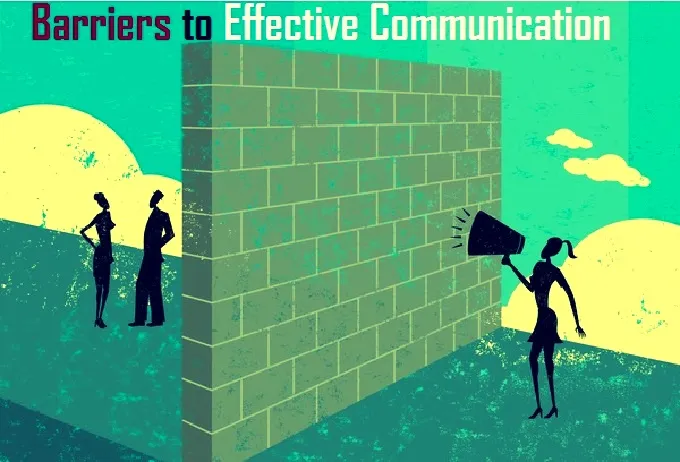 The effective communication requires that the messages are delivered as effectively as possible.
The effective communication requires that the messages are delivered as effectively as possible. 
The effective communication requires that the messages are delivered as effectively as possible. To achieve that, you must commit to breaking down the barriers that exist within each of the stages of the communication process. The barriers to effective communication are numerous, but we shall focus the attention of this article to the most common ones

1. Lengthy Message
Let’s begin with the message itself. If your message is too lengthy, disorganised, or contain errors, you can expect the message to be misunderstood and misinterpreted. The use of poor verbal and body language can also confuse the message.
Barriers to effective Communication in context tend to stem from senders offering too much information too fast. When in doubt here, less is oftentimes more. It is best to be mindful of the demands on other people’s time, especially in today’s ultra-busy society.
Once you understand this, you need to workWork is The transfer of energy from one physical system to a... More to understand your audience’s culture, making sure you can converse and deliver your message to people of different backgrounds and cultures within your own organisation, in your country and even abroad.
2. Noise as one of barriers to effective communication
Noise is the interference that keeps a message from being understood or accurately interpreted by the audience. This may come as result of two main reason:
External noise: Comes from environment where the communication takes place. The main sources of this kind of noise may be loud music, hot sun, babies nearby, or the venue, near heavy traffic or market place, etc.. This breaks the effective communication in the sense that you are unable to exchange the messages as your voices are overpowered by the coming noise.
Internal noise: Occurs in the minds of the sender or receiver when their thoughts and feelings are focused on something other than the communication at hand. This tends to break the normal communication because one of individuals or both involved in communication is absent in mind. You practically seem to be pouring water on the rock.
Semantic
This refers to the meaning of the words or terms used in communication. This may affect the communication in two ways. The first one involved the use of difficult terms by the speaker, that the recipients of the message cannot easily grasp. The second way is the use of language that sounds insinuative to some of your audience. This is likely to arouse people’s emotional reaction to those words and disrupt the effective communication.
Mistrust:
There are times when as a manager in an organization, you tend to develop a kind of fear that one of the employees might report whatever goes wrong in the way you handle thing. This kind of paranoia, is very harmful to the effective communication between you and those you have in charge. This fear might be genuine, but it is important to try as much as possible to control it.
Self-talk

Self-talk may have different meanings, but in communication, we can refer to it as a way of disregarding your audience in your address. In this case, you talk, just like the way you feel like it, or overpraise yourself while speaking, you tend to sound like all the communication or address turns around you and not your audience at all.
This is very hazardous to the effective communication, for people may feel bored and lose interest in the message you intend to deliver.
In conclusion, in order to manage effectively, you need to communicate effectively. In order to communicate effectively, you need to eliminate as much as possible all barriers to effective communication. But you can only avoid these barriers, if you are aware of their existence
 Communication is a way of exchanging information among the living organisms. There are a number of types of communication through which this exchange.
Communication is a way of exchanging information among the living organisms. There are a number of types of communication through which this exchange.
Communication is a way of exchanging information among the living organisms. There are a number of types of communication through which this exchange. The forms of expression highly depend on the species concerned in communicating. There are various modes of communication within each living species, but this becomes even much more diversified when it comes to the human beings. In this article we shall look at the different types of communicating used by human beings.

On interactive point of view
If we consider the interactive aspect of exchange, we can group the types of communication into five major forms:
Intrapersonal communication is a mode of exchange that occurs within us; this is usually referred to as Self-talk.
Interpersonal communication this term is used when we communicate on a one-to one basis-usually in an informal, unstructured setting.
Small group communication happens when a small number of people meet to solve a problem.
Public communication This is one of the types of communication whereby the sender-receiver addresses a message to an attentive audience. It requires one to have some special skills and pays an extra attention to the diverse personalities of the audience.
Intercultural communication takes place whenever two or more people from different cultures interact.
Ethical communication is a fair, honest, and respectful interaction form, which is considerate of others rights.
1. Face-to-face types of Communication
This is one of the types of communicating which is done directly between or among individuals, without an intermediate person or any networking device. There are three major parts in human face to face interaction which are body language, voice tonality, and words. According to the research:
- 55% of impact is determined by body language, i.e., postures, gestures, and eye contact,
- 38% by the tone of voice, and
- 7% by the content or the words used in the process.
2. Verbal or Dialogue communication
Although the exact percentage of influence may differ from variables such as the listener and the speaker, communicating as a whole strives for the same goal and thus, in some cases, can be universal. Three forms concerned are Verbal, Non-Verbal and Visual communication. We shall focus the attention of this article on the verbal communication.
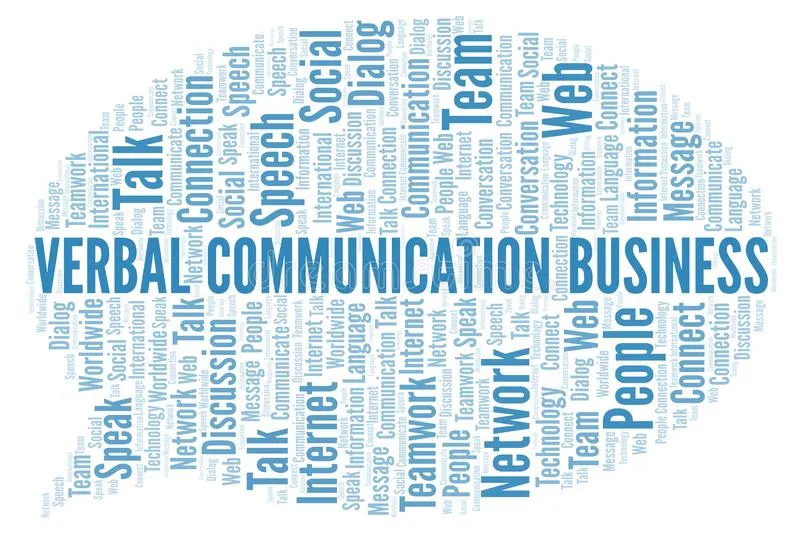
A dialogue is a reciprocal conversation between two or more entities. The etymological origins of the word do not necessarily convey the way in which people have come to use the word, with some confusion between the prefix and the prefix leading to the assumption that a dialogue is necessarily between only two parties.
The basis of communicating is the interaction between people. Verbal communication is one way for people to communicate face-to-face. Some of the key components of verbal interaction are sound, writing, speaking, and language (listening).
Sound
At birth, most people have vocal cords, which produce sounds. As a child grows it learns how to form these sounds into words. Some words may be imitative of natural sounds, but others may come from expressions of emotion, such as laughter or crying. Words alone have no meaning. Only people can put meaning into words. As meaning is assigned to words, language develops, which leads to the development of speaking.
Speaking
Effective verbal types of communication involve the use of both speech and writing to transmit a message. While oral exchange is more effective in reaching a focused target audience, as it involves interaction and additional non-verbal cues to boost the speech, writing is necessary for reaching a large number of scattered recipients. Depending on the situation and the requirements, people use both the spoken as well as written channels for communication.
Through speaking we try to eliminate misunderstanding, but sometimes this is a very hard thing to do. Just as we assume that our messages are clearly received, so we assume that because something is important to us, it is important to others. As time has proven this is not at all true. Many problems can arise in speaking and the only way to solve these problems is through experience.
Speaking can be looked at in two major areas: inter-personal and public speaking. Since the majority of speaking is an inter-personal process, to communicate effectively we must not simply clean up our language, but learn to relate to people.
Listening

Some people do not pay much attention to listening as a communication skill. Equal importance should be given to listening and expression. Verbal communication cannot be effective unless the audience is good at listening and most of its content is forgotten after a presentation. Developing good listening skills is essential in verbal interaction.
In conclusion we can say that the communication is a vital social and cultural tool to human beings, basically for survival. There are many types of this form of interaction, but the most employed, is the verbal dialogue, mainly because it is the most natural and does not require special media. This article focused attention to the verbal and face-to-face exchange. We shall also look at the other forms in our next posts.
 ReadingA Reading on a measuring instrument or tool in physical scie... More skills for today’s adult, the term on its own might sound a bit crazy. We all know readingA Reading on a measuring instrument or tool in physical scie... More as one of the basic cognitive skills that anyone called literate must have acquired. However, there is more than just these basic skills, that get us to fit in educational institutions. We need more strategies and …
ReadingA Reading on a measuring instrument or tool in physical scie... More skills for today’s adult, the term on its own might sound a bit crazy. We all know readingA Reading on a measuring instrument or tool in physical scie... More as one of the basic cognitive skills that anyone called literate must have acquired. However, there is more than just these basic skills, that get us to fit in educational institutions. We need more strategies and …4 leading ReadingA Reading on a measuring instrument or tool in physical scie... More skills/strategies for Success Read More »

ReadingA Reading on a measuring instrument or tool in physical scie... More skills for today’s adult, the term on its own might sound a bit crazy. We all know readingA Reading on a measuring instrument or tool in physical scie... More as one of the basic cognitive skills that anyone called literate must have acquired. However, there is more than just these basic skills, that get us to fit in educational institutions. We need more strategies and techniques of readingA Reading on a measuring instrument or tool in physical scie... More, if we are to built confidence and succeed academically. They involve the use of the symbolic cognitive capacity to understand, analyze, evaluate and to think about different modalities of real problem-solving.
One of the uses of readingA Reading on a measuring instrument or tool in physical scie... More skills, is in the study. In other words, they are part of the study skills whereby you employ your symbolic capacity to transfer the knowledge in your knowledge bank. But how can we make the most of this capacity to be more successful academically or in real-life problem-solving? Every skill requires a strategyA strategy is a plan that integrates an organisation's major... More and special techniques to stay ahead of yourself, your natural challenges and competitors.
Skimming
This is one of the readingA Reading on a measuring instrument or tool in physical scie... More skills for today’s adult consisting of a quick screening to get an overview of the message covered in the text. Skimming will give you the first impression of the whole content in the book or the materialMaterial or Matter is anything which has mass and occupies s... More you are readingA Reading on a measuring instrument or tool in physical scie... More. In this phase, you capture the main ideas of every paragraph and the different subheadings in the content and take not of their general links before you can undertake the deep grasp of it.
Scanning
Scanning involves targeting a certain piece of information in the text and browse through to find it. In this case, you don’t need to readingA Reading on a measuring instrument or tool in physical scie... More every word or detail. However, you may need to browse more in the paragraph that word is found to further put it in the context.

Critical ReadingA Reading on a measuring instrument or tool in physical scie... More
This is one of the types of readingA Reading on a measuring instrument or tool in physical scie... More skills, in which you will have to undertake a deep readingA Reading on a measuring instrument or tool in physical scie... More of the content. This is meant not only to give you a deep understanding of the content, but also to analyze the author’s mind in the text. In this case, your aim is at a full understanding of the text and capturing the author’s intention or digest their opinion.
Detailed ReadingA Reading on a measuring instrument or tool in physical scie... More
In detailed reading, you will need to understand the whole component of a book or piece of information. In this case you will have to carefully read the whole document and analyse it. The difference between detailed and critical readingA Reading on a measuring instrument or tool in physical scie... More is that in detailed one, you will have to go through the entire document, while in critical type, you may focus attention on a single or few parts of the document. Generally, when you are studying for an exam, the detailed readingA Reading on a measuring instrument or tool in physical scie... More comes after skimming and scanning.
Strategies to improve your readingA Reading on a measuring instrument or tool in physical scie... More skills
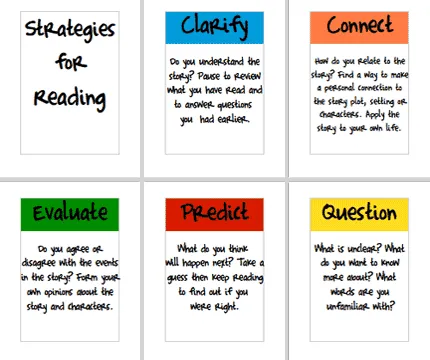
There are a good number of strategies that you can use to improve your skills, as part of readingA Reading on a measuring instrument or tool in physical scie... More skills for today’s adult, but here we shall concentrate on five major ones. These strategies according to researchers are not only meant for improving your skills, but also your critical thinking and systematic reasoning and analysis
Predicting
make sure you set a goal or target for your readingA Reading on a measuring instrument or tool in physical scie... More before your start, and throughout your readingA Reading on a measuring instrument or tool in physical scie... More workWork is The transfer of energy from one physical system to a... More toward achieving that goal. This may be for instance, what kind of knowledge you would like to acquire in that piece of materialMaterial or Matter is anything which has mass and occupies s... More.
Making connection
at this stage you connect the acquired knowledge through readingA Reading on a measuring instrument or tool in physical scie... More to your already set goal. Not only that, you also have to associate what you are readingA Reading on a measuring instrument or tool in physical scie... More to your already acquired knowledge, to the other parts of the text and to the world reality. This involves three main steps, namely: prediction, connection and conclusion.
Inferring
What you read one sentence you usually try to imagine what’s coming next. This kind of prediction, gives the opportunity to, not only enjoy what you are readingA Reading on a measuring instrument or tool in physical scie... More, but also to read faster and deeply understand it.
Questioning
This is the most interesting phase of readingA Reading on a measuring instrument or tool in physical scie... More whereby you now digest what you have read. To do this you try to ask yourself questions from the text you read in order to counter-check your goal achievement level. You kind of process the information or knowledge you acquired through readingA Reading on a measuring instrument or tool in physical scie... More the text, using a self-questioning technique. However, if you are lucky to have a study mate, this is the best time you can exchange questions to verify the level of mastery of the content you have read.
Summarizing
This is the final stage of your readingA Reading on a measuring instrument or tool in physical scie... More, which will give you a mental map of the entire content you have read. This is the map that you can use in the examination or test to answer the questions. It is this map which will guide you to where to find the answers relevant to the question asked in your paper. Furthermore, this map consists of the main ideas in the text you have read and their interconnections.
Was this helpful to you? Let us know in comments and if you have any question related to the readingA Reading on a measuring instrument or tool in physical scie... More skills for today’s adult and young, just post it. We shall give you a brief answer. However, depending on the complexity of the comprehensive response, we may also cover it in one of our next posts.
 Study techniques for students relevance can be easily understood if we recall the effects of academic performance on learners’ self-esteem and self-concept. People have different intellectual capacity or Intelligence quotient (IQ) and also, proceed differently when it comes to the academic matters. We all have different favorable time to study. Neither do we spend the …
Study techniques for students relevance can be easily understood if we recall the effects of academic performance on learners’ self-esteem and self-concept. People have different intellectual capacity or Intelligence quotient (IQ) and also, proceed differently when it comes to the academic matters. We all have different favorable time to study. Neither do we spend the …
Study techniques for students relevance can be easily understood if we recall the effects of academic performance on learners’ self-esteem and self-concept. People have different intellectual capacity or Intelligence quotient (IQ) and also, proceed differently when it comes to the academic matters. We all have different favorable time to study. Neither do we spend the same time on prep for a test or exam.
However, there are some measures that scientists in the areas of psychology and education have found to be common among all normal human being. By Normal, I mean learners with average to high intellectual capacity). It doesn’t matter how difficult the subject is, with these measures, at least with enough time you can fully prepare for your test or exam.

Practice and repetition
This is the most common and effective study techniques for students, regardless of their IQ. It is a rehearsal technique; you can use to reinforce your textbook or notes readingA Reading on a measuring instrument or tool in physical scie... More. To succeed in this method, you have to read your notes and relevant text several times.
In addition to that, write down the summary of what you have read in your own words to check the level of your understanding. In this way, you will improve your retention and obviously your result (performance) in the test or exam. You can use this technique instead of memorization. It is further necessary that you rather engage yourself in a systematic, well planned, spaced-out study than mass cramming close to examination period.
Note Taking as study techniques for students
This is another method of effective study skill to prepare for exam and test. Even though many teachers give their learners notes by writing, dictation of just a PDF copy, you still need to engage in note taking during your private studies since this would help you to concentrate on what you are readingA Reading on a measuring instrument or tool in physical scie... More. Through note taking as one of study techniques, you can separate the important points from the supporting ones and give yourself more the examples where applicable. Doing this will mostly help you to interpret the ideas in the note and write them in your own words, draw the diagrams and sketches to improve your understanding the content further.
But what are the best note taking techniques?
Before getting into the note taking method as part of study techniques for students, it is important to note that, note taking should come after you have got an understanding of the content materials you are learning. After you are sure that everything is clear, then you can proceed as follows:
EXTRACT THEMES FROM THE STUDY MATERIAL
Get the theme or key idea that comes from the study materialMaterial or Matter is anything which has mass and occupies s... More you are readingA Reading on a measuring instrument or tool in physical scie... More and develop it briefly in your own words and understanding.
USE THE SPRAYS TECHNIQUE
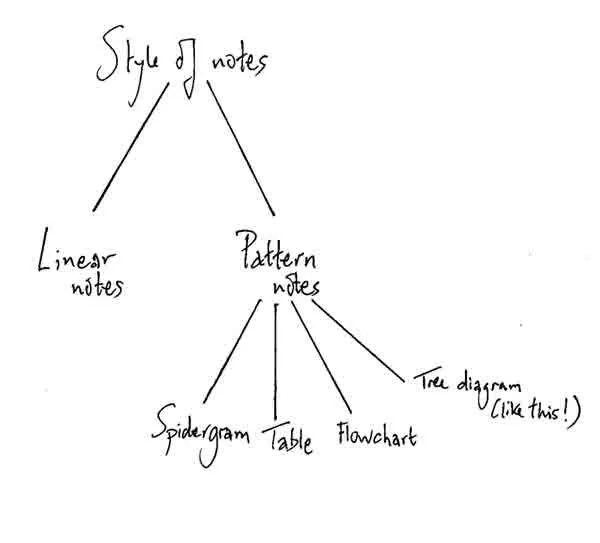
This is a method in study techniques involving a quick jotting or writing down your own ideas, as well as important words, principles and concepts from the materialMaterial or Matter is anything which has mass and occupies s... More you are readingA Reading on a measuring instrument or tool in physical scie... More. You don’t need to do this in any specific order. You should rather jot these ideas down as they come across your impression. Later on, in the materials you are readingA Reading on a measuring instrument or tool in physical scie... More try to link the ideas and words together, to show their relationships. In this case, you could even mix the words with sketches, graphs and diagrams. However, they should always be linked with each other and the main topic should be put in the central position.
USE OF PATTERN NOTES
Notes could be arranged in a way that it would give a pattern i.e., bringing together cluster of ideas, concepts principles and key words on segments of the topic. Different patterns could be noted in different ways but as it sprays, they should be linked together. Pattern notes are useful in areas like Medicines, Engineering, Music, Fine Arts, etc.
PARAPHRASING IN STUDY TECHNIQUES
This is a method of note-taking which emphasizes taking the materials read paragraph by paragraph and converting them into one’s word. You can use this method in order to bring out the major ideas from the text you read, according to your personal interpretations of the materialMaterial or Matter is anything which has mass and occupies s... More.
USE OF SUMMARISATION IN STUDY TECHNIQUES
Alternative to or supplementary to paraphrasing, is summarisation. This method consists of readingA Reading on a measuring instrument or tool in physical scie... More a whole passage or a piece of materials and ask yourself what the author meant by it. Thereafter, write down the response in your own words. You can always turn to the same passage in order to remind himself of the key words and ideas.
USE OF ABBREVIATIONS IN STUDY TECHNIQUES
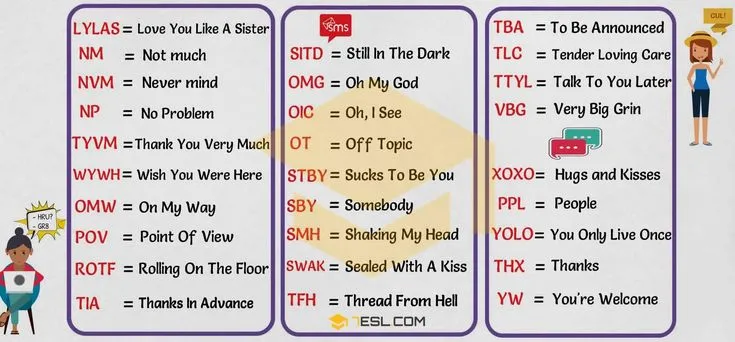
You know, you are the manager of your own notebook. When the teacher or lecturer is talking, you don’t need to copy the exact words they say. You may equally use the symbols or coded to write down the main ideas from the lecture of lesson. This method saves you time and space and helps you catch up with important ideas particularly in lectures.
To successfully use this technique, you need to master the conventional symbols or abbreviation for different words. You may also come up with your own coding to make sure you are not left behind during the lecture. However, you need to be careful and cautious in interpreting the abbreviated words as well as the codes when revising. And more importantly, never use these codes on the examination answer sheet.
These are the major study techniques for students using the note taking techniques. Join use in our next post as we go through the different techniques of readingA Reading on a measuring instrument or tool in physical scie... More. In the meantime, let us chat; tell us if you were aware of these methods, have been using them in your prep? Or you have some more techniques that workWork is The transfer of energy from one physical system to a... More better for you that you would like to share with our audience. Please write them in the comments down here to help one another improve our study skills.